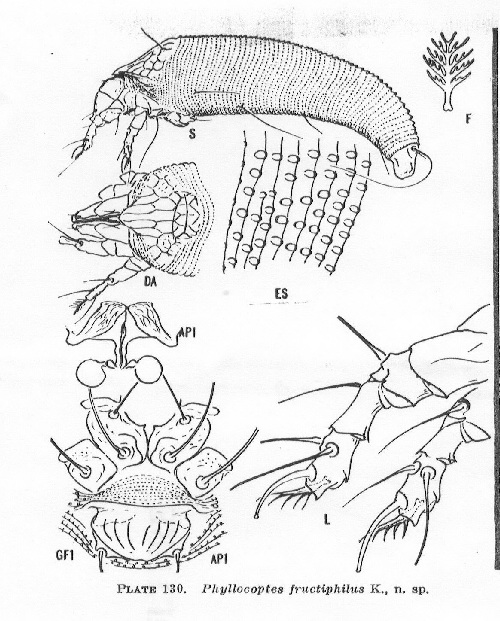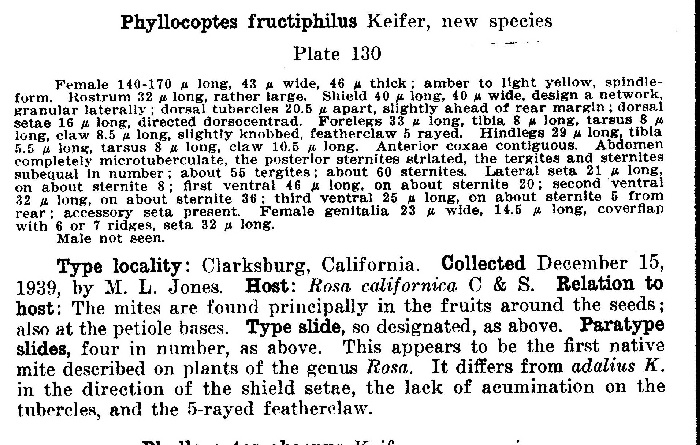
| What is the method of Transport - the Disease Vector? |
| A wind blown microscopic wingless mite, 'Phyllocoptes fructiphilus' is credited with the spread of the disease in nature. This is NOT A SPIDER MITE, but is one of about 3,100 known species of |
| eriophyoide mites some of which spread plant viruses. P. fructiphilus has been shown to transmit RRD |
| from plant to plant, and is the predominant agent of transmission in nature. The mite was first described |
| by Hartford H. Keifer in 1940 from a sample collected at Clarksburg, CA on December 15, 1939 on a healthy R. californica and described in the Bulletin of the Dept of Agriculture of the State of California |
| Vol. XXIX Number 1 Jan/Feb. 1940 (see line drawing of the ugly bug below). The total length of this bug is 140 to 170 microns-esentially invisible without a hand lens, barely visible with a 20x hand lens. |
 |
 |
| Another, potentially more insidious method of transport would be the sale, trade or barter of RRD |
| infected roses. If RRD were to enter commercial rose fields unnoticed, the disease could spread rapidly. See Chapter 10 for more information. When a RRD-diseased rose enters a rose garden (from whatever source), the mites are the agent of spread within the garden. |